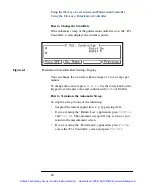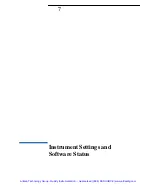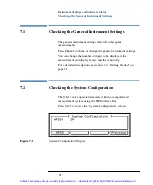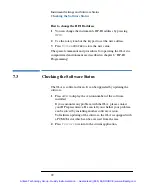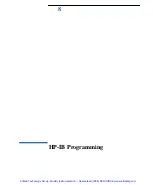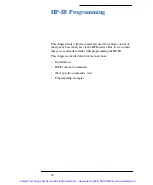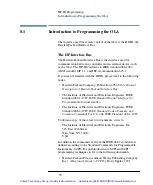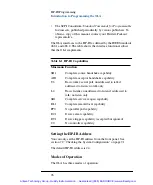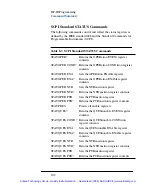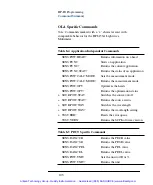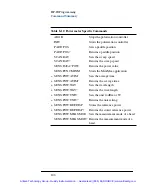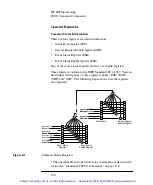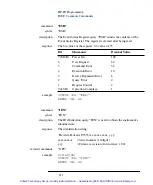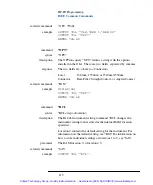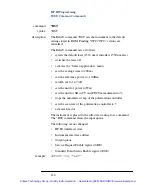
100
HP-IB Programming
Introduction to Programming the OLA
Command Syntax Used in this Manual
Please observe the following guidelines:
<...>
The characters between angled brackets show the kind of
data which you send with a command or which you receive upon a
query. You do not enter the angled brackets. The most common
kinds of data are:
•
application: “Application” is an application name.
•
boolean: This can be the literals ON or OFF, or a number: 0
means OFF, 1 or any non-zero number means ON.
•
value: Values are numeric data in integer (e.g. 1500), decimal
(1500.0) or exponential (1.5e3) format.
•
wsp (=white space): The characters HT, CR, and space are
treated as white space characters.
Others are described with the respective commands.
[...]
The characters between brackets show optional information
that you can include. You do not enter the brackets.
|
The bar indicates an either-or choice. For instance, 1|2 means
either 1 or 2, but never both.
The instrument accepts commands in short or long form.
In this manual upper and lower case characters are used to separate
between the short and long form of the command, for example
:SENSe[1|2]:POWer:ATIMe. In short form you can send this
command as
:SENS1:POW:ATIM
. The first colon can be omitted
for the first command or query in your message.
Artisan Technology Group - Quality Instrumentation ... Guaranteed | (888) 88-SOURCE | www.artisantg.com

